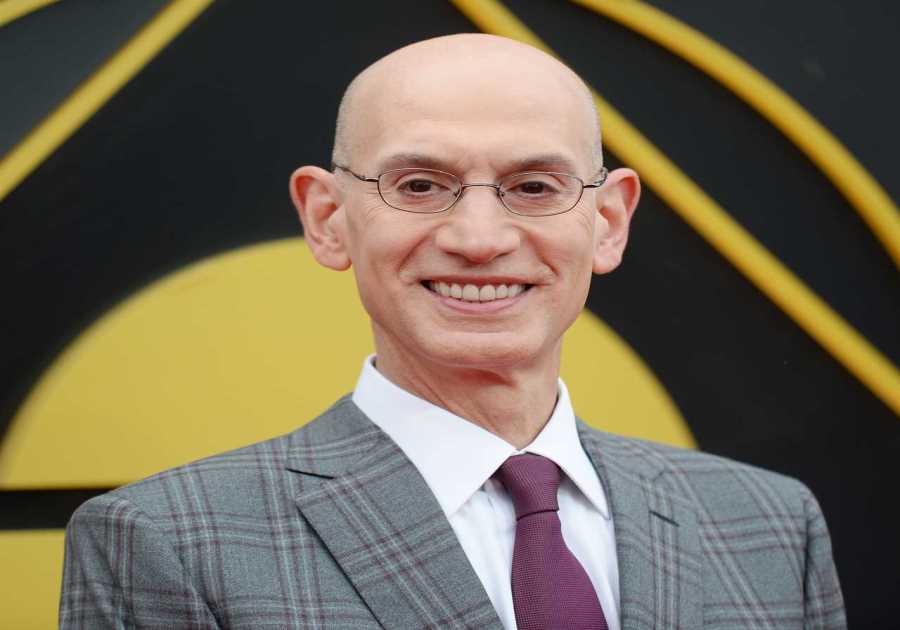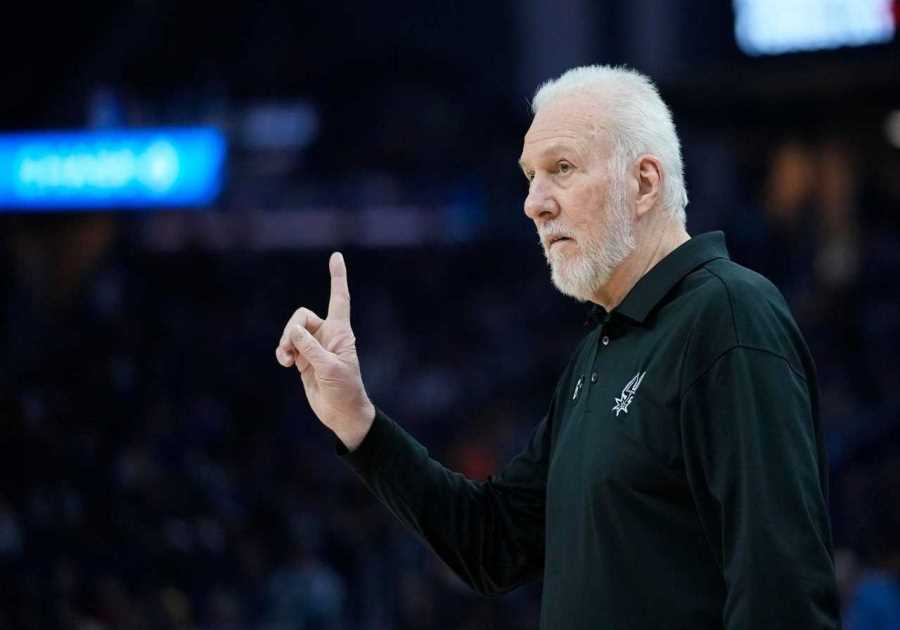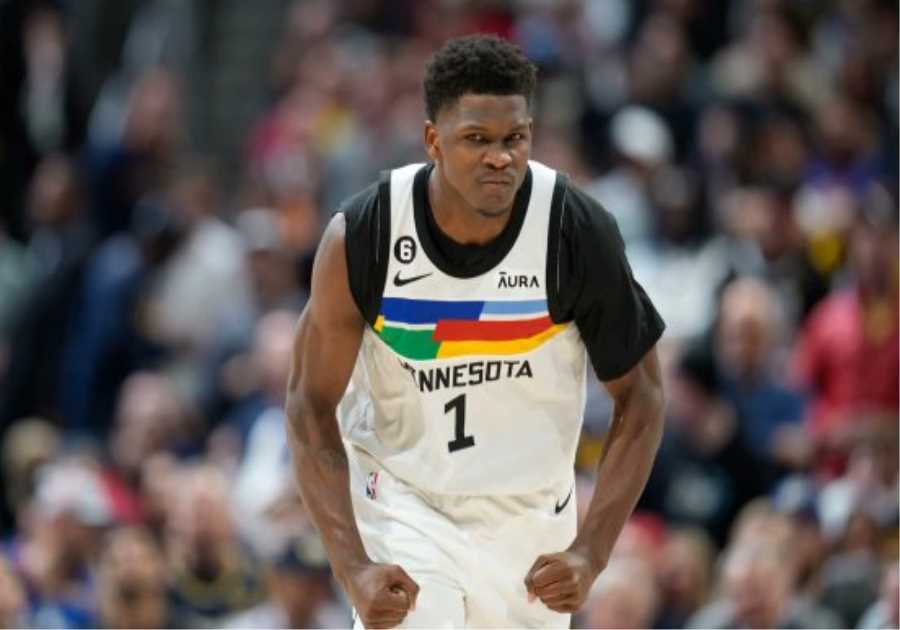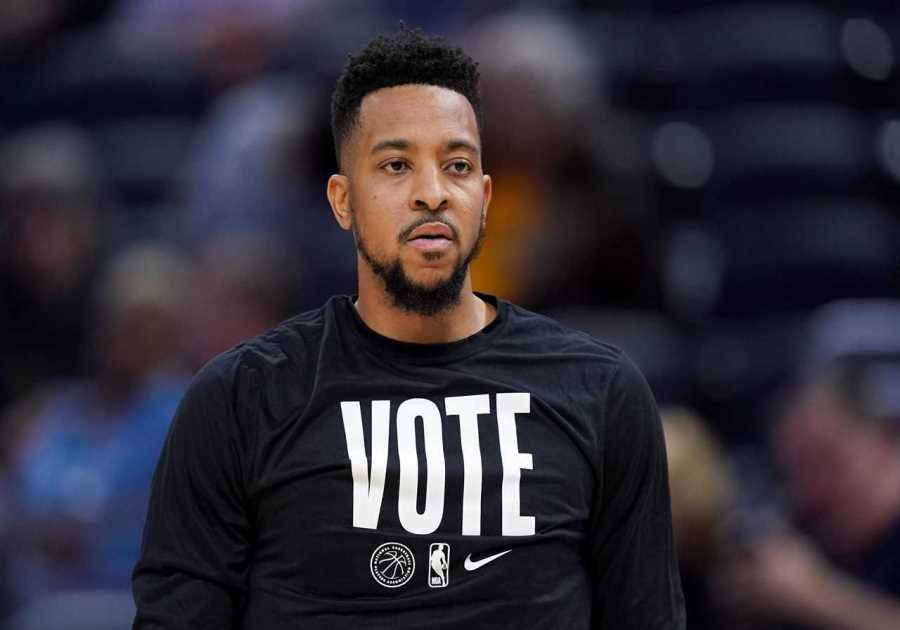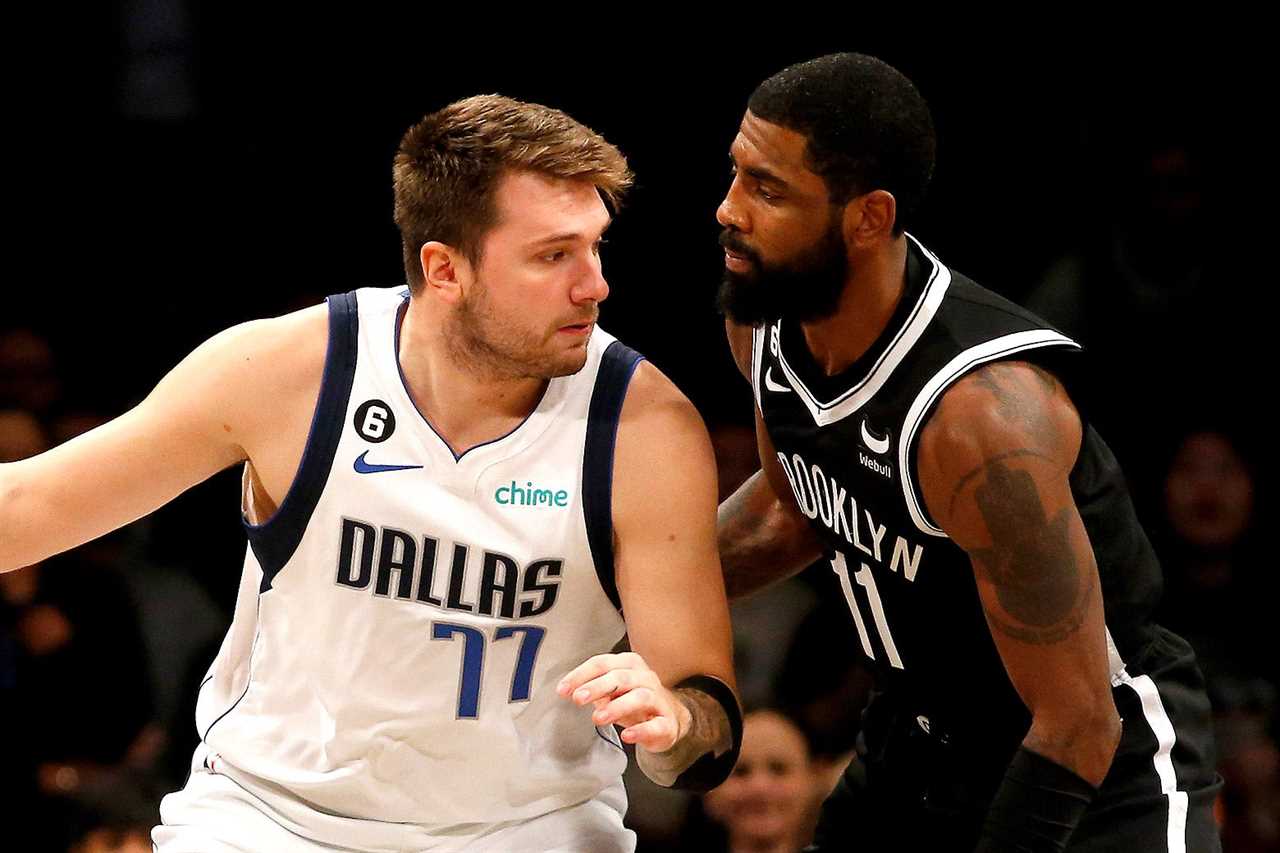
Last Friday around lunchtime, the Athletic’s Shams Charania, one of the NBA’s most high-profile “insider” journalists, tweeted out that Kyrie Irving wanted a trade. The specific request was shocking, but something fitting its general description—a surprise trade request reported by either Shams or his ESPN counterpart Adrian “Woj” Wojnarowski—had been highly anticipated for weeks by those of us who are devoted to professional basketball’s most grotesque and enthralling annual ritual: the NBA trade deadline.
The trade deadline is the midseason cutoff for teams to reshuffle their rosters in order to prepare—or not—for the playoffs, and the accompanying atmosphere of desperation and derring-do brings to the surface a lot of what’s most entertaining and most unsettling about the contemporary game. It’s a festival of new hopes, new energy, and new opportunity, by way of a bunch of suits in horse-trading mode. A few hours after Shams’ scoop, Kyle Kuzma, a forward for the Washington Wizards and the current subject of trade rumors himself, tweeted, “Ngl the deadline one of the most entertaining times of the year” with a popcorn emoji.
Over the past decade or so, the deadline has risen in prominence as a media event for a variety of reasons. Superstar players like Irving and his current and former teammates LeBron James and Kevin Durant have grown increasingly able to control their own destinies regardless of contract status, leveraging their stardom to move around the league as they please. The NBA media ecosystem, in turn, has responded with lavish attention, drawing the eyeballs of fans and players alike to the picaresque journeys of these fickle giants. And fans, influenced by the popular availability of advanced analytics as well as the visibility of massive team-wide teardowns like the Philadelphia 76ers’ “the process,” are more prone than ever to express their fandom through obsessive fantasy team building. In this environment of player movement and 24-hour social media coverage, the trade deadline has become an event as compelling, chaotic, and ultimately compromised as the upcoming Super Bowl. And just like Kyle Kuzma, I can’t get enough of it. [popcorn emoji]
I love basketball. What I feel about the NBA trade deadline—the sport’s most compelling and cursed ritual—is not love, exactly. It’s something else. Basketball is a game, it’s an industry, it’s a “product,” as podcasters frequently remind us, but it’s also, for most of us, on most nights of the year, a TV show. There are self-contained case-of-the-week narratives (fun matchups, old players returning home, “statement games”) as well as multi-season dramatic arcs. There are heroes and villains, characters whose fates change game to game. Stats and records matter, but so too does the on-screen plot. It’s how grudges and legends are made.
That story tends to split outside the game itself. On one hand are the grand arcs of teams rising and falling, cores developing or aging, franchises winning or losing. On the other are the lurid, hysterical, objectifying scoops, tweeted out in terrible detail by highly paid insider journalists like Shams and Woj. These men are the gonzo poets of the trade deadline. Their skill is not nuanced analysis, nor, famously, is it even crisp or elegant writing. Their skill is access and quickness. They know people who know things, they’re willing to repeat whatever they’re told, and they can tweet faster than anyone else. They are “hearing a lot of smoke” about “exploratory conversations” or “serious talks” between “highly motivated” general managers who are “looking for upgrades” or “dodging the tax” or “shedding salary” or “having a fire sale” or “tanking for the draft” or “taking on bad contracts” or “star-hunting” or “consolidating assets” or “looking for at least one quality first-round pick, a young prospect, and a veteran role player.” They aren’t storytellers so much as the mediums through which other people tell the stories they want others to hear.
But what story is it that we are following? Trade rumors, whether or not they come true, tell the story of players as betrayers and betrayed, as agents secret and free. In building compelling narratives out of these leaks and rumors, reporters emphasize the romance—clichéd or not—of professional sports, the dream of immortality, the relentless pursuit of greatness, the hope of a future different from the one we see laid out ahead of us. But especially in this part of the season, they also rely upon its most grim and telling euphemisms. Athletes are referred to as assets, as good or bad contracts, as names on a conversion chart specifying how many draft picks or prospects a player might be worth. Sam Amick, a veteran reporter for the Athletic, often pivots segments on his podcast by saying, “And then there’s the human component.” It’s a fine gesture coming from one of the more thoughtful reporters in his field, but it also emphasizes how infrequently that human component comes up in these conversations. The trade deadline is a morality play about what exactly morality is in this league.
It’s helpful to contrast the trade deadline with another of the season’s most watched events: the NBA draft. The draft, which occurs in the summer, is a much more traditional venue for pomp and circumstance. Sure, there are hurt feelings and plummeting draft positions, but at the end of the night, lives are changed, and nobody’s played a minute of basketball. For a lot of these guys, it might be the last purely good moment of their careers, but all of them feel as if it’s their first. If the draft is about clear beginnings, though, the trade deadline is about knotty middles—a proliferation of conspiracy theories, plot twists, and desperate reboots in the midst of an already messy season. It can be as impactful as the draft, but its vibe is much, much worse.
And it’s an event that relies on the public’s attention. Most of these negotiations proceed at least partially in public. General managers and team officials leak information—misleading or not—to national reporters and local beat writers when they want it to get out there. Players’ agents plot countermoves and strategically leak information in response. Players’ friends and family say things to reporters that they shouldn’t—and that information makes it way out via tweets and talk show hits and podcast appearances. It’s equal parts detective story and relationship melodrama, and our fascination is what fuels it.
But the deadline isn’t just tweets from ESPN broadcasters and stories in the Athletic. The trade deadline is also a pulsating spew of digital detritus that keeps fans’ eyeballs glued to their phones for the better part of a week. Jake Fischer, an NBA reporter for Yahoo, tweeted, “Sunday before the trade deadline, it should be illegal to get that weekly Screen Time push alert.” And Fischer does this for a living; the rest of us rifle through all the rumors while we’re living. There’s so much of it: fake sources posting elaborate and fantastical trade concepts on message boards, passive-aggressive postgame presser clips going viral, slapstick social media tradecraft from GMs and agents, aggregators, liars, and of course all those “emergency pods” from any of dozens of NBA chat shows that self-destruct seconds after their posting. Katie Heindl, who writes the incredible Basketball Feelings newsletter, has said that the experience of the trade deadline for fans oscillates between “a screaming vortex … and a proper void.” It’s a part of fandom that draws us in and violently spits us out.
But while we’re in there for the next couple of days, what kinds of stories might we pay attention to? Here are a few key plot points:
The Northmen
The Toronto Raptors are not very good this year, but it’s not for lack of incredible basketball players. Is it a flawed team-building concept, a wayward coach, or just bad vibes? A lot about this year’s trade deadline will depend upon how Raptors team President Masai Ujiri answers that question. Four players on the Raptors—Pascal Siakam, Gary Trent Jr., Fred VanVleet, and O.G. Anunoby—could make a huge difference if they found themselves on a contending team this year. If Ujiri decides to “blow it up” or even just move one or two of these players, the action at the deadline will follow.
The Way We Were
Kyrie Irving’s trade request—and subsequent trade to the Dallas Mavericks—broke up one of the league’s most fraught star duos. Irving and his bestie, Kevin Durant, came to Brooklyn in 2019 with the goal of winning a million championships together, but due to bad luck with injuries, a brief, failed dalliance with a third superstar in James Harden, and, well, Irving’s refusal to get vaccinated, it never worked out. Now Durant, a Top 5 player when he’s healthy, is alone in Brooklyn once again. Will he demand a trade too? And what about Irving’s other former teammate/frenemy LeBron James? James, who’s captaining a sinking ship in Los Angeles, had hoped his old teammate would rejoin him. Now that Irving has been sent to Dallas, will LeBron find someone new on the trade market? Will any of these members of the Lonely Hearts Club make it to the second round of the playoffs?
The Next Messiah
A specter haunts the trade deadline, and his name is Victor Wembanyama. “Wemby,” as he’s known in the U.S. media, is a 19-year-old, 7-foot-2 French professional basketball player who will be eligible to enter the NBA draft this summer. Scouts and journalists are salivating over his blend of size, skill, and athleticism, and it’s widely considered a foregone conclusion that he’ll be the No. 1 pick in the draft and likely a franchise cornerstone for whichever team is lucky enough to pick him. For a number of bad teams right now, the question will be whether it makes sense to get even worse in order to increase the odds of landing the No. 1 pick. Keep an eye out for teams like the Detroit Pistons and the San Antonio Spurs to trade some of their talented players in the hopes that they can win the lottery in a few months.
Phillip Maciak
https://slate.com/culture/2023/02/nba-trade-deadline-kyrie-irving-toronto-raptors.html
By: Phillip Maciak
Title: One of Basketball’s Most Thrilling Dramas Takes Place off the Court
Sourced From: slate.com/culture/2023/02/nba-trade-deadline-kyrie-irving-toronto-raptors.html
Published Date: 02-08-2023
Frequently Asked Questions
What is the difference between a technical foul and a flagrant foul?
A technical foul in the NBA refers to unsportsmanlike conduct, such as fighting with officials and excessive celebration. A technical foul will result in one free shot and the opposing side will be given possession of the ball.
Flagrant fouls are when a player makes violent or aggressive contact with another player. It can result in two free shots for the opposing side and possession of a ball. Flagrant one is the most severe and Flagrant 2 is the least. Flagrant one is a lesser offense than Flagrant 2 and doesn't result in an ejection.
A personal foul refers to any contact that is illegal between two players. This is typically a result of illegal hand-checking and holding, pushing, pushing or tripping an opponent. Personal fouls can lead to free throws or the possession of ball for the other team. Personal fouls are not the same as flagrant or technical fouls. However, they can be a sign of unsportsmanlike behavior.
All fouls in the NBA can lead to free throw attempts or possession of a ball for the opposing side. The intent behind each foul and the severity are the key to determining the difference between technical fouls or flagrant or personal fouls.
What is an exception to the NBA trade policy?
The NBA offers a trade exception, which allows teams to trade away a player. This exception allows teams the opportunity to acquire players whose salaries exceed those of the players they have traded away, without having to make corresponding salary moves. A team can use this exception over multiple seasons, and it does not count against their salary cap or luxury tax threshold. Trade exceptions offer teams a useful way to adjust their rosters without needing to reduce salaries or modify their roster composition. This allows teams to maintain a level playing field and prevent unfair financial advantage situations.
It also keeps the league financially stable, and ensures teams have the ability to make moves without worrying if they can afford them. Trade exceptions are an integral part roster construction in NBA. They can be used to help teams fight for championships.
Which NBA star is the best scorer right now?
Because different players have their own styles of play, the answer to this question can be subjective. However, some popular choices for the most dominant scorer in the NBA include Kevin Durant, LeBron James, Stephen Curry, and James Harden.
Kevin Durant's not just a great shooting player, but he is also an offensive force! With two NBA Championships and 2 Finals MVPs under his belt and a regular season MVP title, this player has some serious game.
Statistics
- The 2013–14 season opened with 92 international players on the opening night rosters, representing 39 countries and over 20 percent of the league. (en.wikipedia.org)
- Meanwhile, the opening night rosters include a record-setting 234 players with some G League experience, according to the NBA ( Twitter link ). (hoopsrumors.com)
- The opening game of the 2020 Finals between the Los Angeles Lakers and Miami Heat brought in only 7.41 million viewers to ABC, according to The Hollywood Reporter. (en.wikipedia.org)
- The 2013–14 season opened with 92 international players on the opening night rosters, representing 39 countries and over 20% of the league. (en.wikipedia.org)
- "NBA first-round ratings drop 27 percent, 40 percent since 2017–18". (en.wikipedia.org)
External Links
twitter.com
- Tweet / twitter
- Sam Amico on Twitter: "Timberwolves Waive PJ Dozier, CJ Elleby and AJ Lawson - Hoops Wire https://t.co/xKu1ZTuQZN" / Twitter
bleacherreport.com
- Which NBA Teams will Join the Victor Wembanyama Teamathon?
- Latest NBA Intel: Sources Expect Zach LaVine to Re-Sign with Chicago Bulls
sbnation.com
si.com
How To
What is the best way to get drafted into the NBA?
High school and college are the two main routes to becoming a NBA basketball player.
NCAA schools offer college players the opportunity to attend Duke University, North Carolina State University or the University of Kentucky. These schools offer four year education and training. These schools offer four years of education and training. They learn how defense and offense can be run. They learn mental skills that are essential for professional athletes.
High school players attend prep schools outside of their home states. These schools are focused on talent development and provide athletes with personalized attention. Players are taught academics, character development, and sportsmanship.
Both types players must pass the identical physical tests to be eligible for the draft. The test includes running 40 yards, jumping above a 5'6" box and standing on one leg while throwing a football through the tire.
These players are invited to take part in training sessions at various NBA teams if they pass the tests. The teams evaluate players based upon their height, weight and wingspan.
Teams also consider their past experiences. A player who has played AAU basketball will be given preference.
A lot of players who are too small to play professionally are considered "one-and-done" prospect. These players are often chosen in the second round.
Some players skip college to join the NBA. These players are known to be "prospects". Prospects don't need to wait until the end of the year to declare themselves eligible for the draft.
They can ask for an exemption to allow them to participate in the draft early. If a prospect does so, he will be able to compete against other prospects during the pre-draft process.
Participation is an option for prospective players who want to increase their chances in getting selected. Summer league games are held in July and August.
These events give scouts the opportunity to watch players in action, without the need for injury risk.
The NBA Draft takes place in June. It is when all the top NBA prospects are evaluated. Each team gets a different number of picks each round.
The 15th overall selection is, for example, the pick 1 in the first round. The 60th selection is in the third round.
Teams make trades after the draft to complete their rosters. Mini-camps are sometimes held by some teams to allow potential draftees to come train with them.
Draft day is thrilling! What happens next?
Once the draft starts, you don't have to wait for your name in the call. Each NBA team selects players from the pool.
Once a team selects players, it sends them a contract which outlines their salary, playing times, and benefits. He becomes an employee of the company.
He also receives a jersey with his name on the back and a uniform with his new nickname.
He signs the contract. That means he officially joins the NBA.

